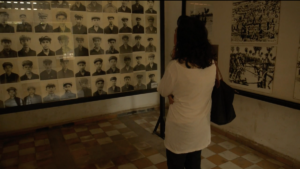Southeast Asia EAA Archives

Southeast Asia still seems to garner too little attention in American school and university courses. The following sample archival selections should be useful as student assignments and/or teacher backgrounders. Southeast Asia is Maritime Asia at one level and understanding the Indian Ocean and its role in global history is a good place to start. Most students (and some teachers, including myself two decades ago), have little or no specific understanding of the size and importance of the Indian Ocean. After sharing rudimentary information with students on that topic, I recommend Historian Michael Vann’s well-done essay on one of many Southeast Asian entrepôts in “When the World Came to Southeast Asia: Malacca and the Global Economy” (Volume 19, Number 2, Fall 2014).
Singapore also commands attention for various reasons. Charles Chao Rong Phua’s “Top Ten Things to Know about Singapore in the Twenty-First Century” (Volume 22, Number 2, Fall 2017) is a multi-disciplinary, basic introduction to a nation that has significant regional, and arguably world impact.
Singapore is culturally diverse, and its intercultural relations have been an issue for a long time. Leonard Sebastian’s (Forgive “soccer” in the title but a majority of EAA readers are North Americans) “What Soccer Means To Me: National Integration through the Prism of Soccer in Singapore” (Volume 21, Number 2, Fall 2016) is an autobiographical account of how a passion for the sport was a positive centripetal experience for young people coming of age in some turbulent times and should be an excellent student reading.
Shelton Woods’s “Việt Nam in the Twenty-First Century: The Unbreakable Bamboo” (Volume 23, Number 3, Winter 2018) is a good general overview of Việt Nam that begins after the conclusion of the Việt Nam War on May 1, 1975 that provides students and teachers with well-written descriptions of political, economic, and social developments in an essay intentionally crafted to transcend stereotypes of Việt Nam as simply a conflict-riddled nation.
High School History teacher Van Anh Tran writes an excellent essay review of “My Cambodia” and “My Cambodian America” (Volume 20, Number 3, Winter 2015) that highlights two short documentaries relating to Cambodia that remain powerful introductions to Cambodian society and Cambodian-Americans today that teachers who use the documentaries should carefully consider. See “Other Teaching Resources” below in the EAA Digest for more about these two documentaries.
Other Teaching Resources: Southeast Asia

Curriculum Specialist Rylan Sekiguchi of the Stanford University Program on Intercultural and Cross-Cultural Education (SPICE) and independent filmmaker Risa Morimoto won the Franklin R. Buchanan Award in 2015 for an 18-minute documentary, My Cambodia, a 13-minute documentary, My Cambodian America, and related curriculum materials from SPICE.
Although both documentaries are well done, I’ve used My Cambodia in several classes. Narrated by University of California Berkeley Professor Khatharya Um as she visits Cambodia, it is a compelling introduction to the Pol Pot regime. In utilizing the documentary in several classes, it has always caused some students to shed tears; I’ve never seen a student appear to be passive or emotionless about this film.
SPICE Multimedia Series: My Cambodia and My Cambodian America
Direct links to documentaries:
I also highly recommend each of these Key Issues in Asian Studies volumes on Southeast Asia:
- Indonesia: History, Heritage, Culture by Kathleen M. Adams
- The Philippines: From Earliest Times to the Present by Damon L. Woods
- The Story of Việt Nam: From Prehistory to the Present by Shelton Woods
This article was published as part of the November 2020 EAA Digest.

